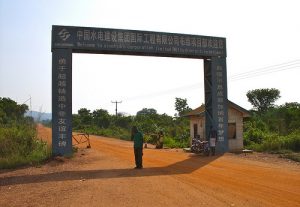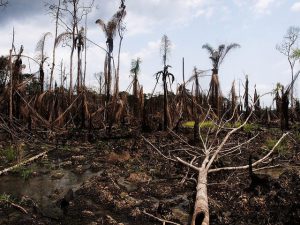In response, more and more Chinese companies are moving production into developing markets. In some cases, this is to take advantage of local commercial opportunities — Foton recently announced that it would begin manufacturing commercial vehicles in Uganda to supply the East African market, while Beijing Autoworks has launched a minibus factory in South Africa.
However the main advantage of creating manufacturing bases in, for example, less economically developed countries in sub-Saharan Africa is to take advantage of the complex rules of origin that govern preferential or tariff-free exports to the European Union or the US.
Offshore manufacturing
The textile and garment manufacturing industry is one of the primary examples of this manufacturing shift In Ethiopia, the Huajian Group is the key investor in a newly-created shoe manufacturing hub, which it claims will create 100,000 jobs locally. The company makes shoes for major Western brands, including Tommy Hilfiger and Clarkes. Mauritius, Lesotho and Nigeria are also major recipients of inward investment in the textile sector.
But with this comes fears that companies are building in environmental and social risks. A Chinese-owned tanning factory in Somaliland was recently accused of dumping dangerous chemicals in waterways.
A study by Xiaofang Shen at Johns Hopkins University argues that many Chinese firms are simply following the established pattern of globalisation. Amongst the firms surveyed for the report, “cheap labour” and access to local and export markets were the principal motivating factors.
Dr Shen’s study looked at five significant recipients of Chinese investment projects in Africa. In Ethiopia and Nigeria, host governments expressed concern over poor environmental standards by Chinese companies. Liberia, Rwanda, Nigeria and Zambia all reported low labour standards, and that the competition was damaging their local industries.
Beijing has supported moves into manufacturing in Africa in reaction to criticism that the state-to-state relationship was exploitative, with manufactured goods going in and unprocessed resources coming back in return. This configuration has increasingly attracted opprobrium from policymakers, such as the influential central bank governor of Nigeria, Lamido Sanusi, who said in an article in the Financial Times earlier this year that the imbalance of trade was “the essence of colonialism.”
However, many Chinese excursions to Africa are now from smaller companies or single entrepreneurs, who operate outside of the state’s control, and pose a risk to the image that Beijing tries to project on the continent.
Who takes responsibility?
Yejoo Kim, a researcher from the Centre for Chinese Studies at Stellenbosch University, says that Chinese government officials appreciate the risk, and sometimes now provide investors with host country regulations translated into Chinese in an attempt to reduce misunderstandings.
“However, since there are large numbers of private enterprises ranging from manufacturers to street vendors … it will take a while for Chinese companies operating in Africa to become fully socialised and accept corporate social responsibility.”
The Senegalese economist Sanou Mbaye, a former vice president of the African Development Bank, says that while there are fears, in particular amongst workers groups and trade unions, that African countries are “being invaded” by Chinese emigrés, the reality is that China’s investments have made a great contribution to industrialising the continent.
“Can you blame the Chinese?” he says “When they took over these textiles [industries] they were not very productive.”
Mbaye says that it is ultimately the responsibility of African governments to set the rules.
“The relationship between China and Africa is defined by local government. Of course everything is not perfect, but it is up to the Africans to design a strategy with regard to the Chinese.”
International clothing brands also bear some responsibility. Following the Rana Plaza disaster, textiles manufacturers have found themselves under enormous scrutiny for their procurement practices. More than 50 brands have since agreed to a legally binding code on factory standards in Bangladesh.
Improvements in supply chain standards have also been driven by initiatives such as the Worldwide Responsible Apparel Production programme, begun 10 years ago, as well as improvements to corporate social responsibility codes at clothing companies. Voluntary standards, such as the International Labour Organisation’s “Better Work” programme have borne fruit, according to Niny Khor, the Asian Development Bank’s economist based in Beijing.
“In both Cambodia and Vietnam — countries where some Chinese businesses have expanded into — evaluations have shown that these voluntary programmes have improved compliance and working conditions.”






